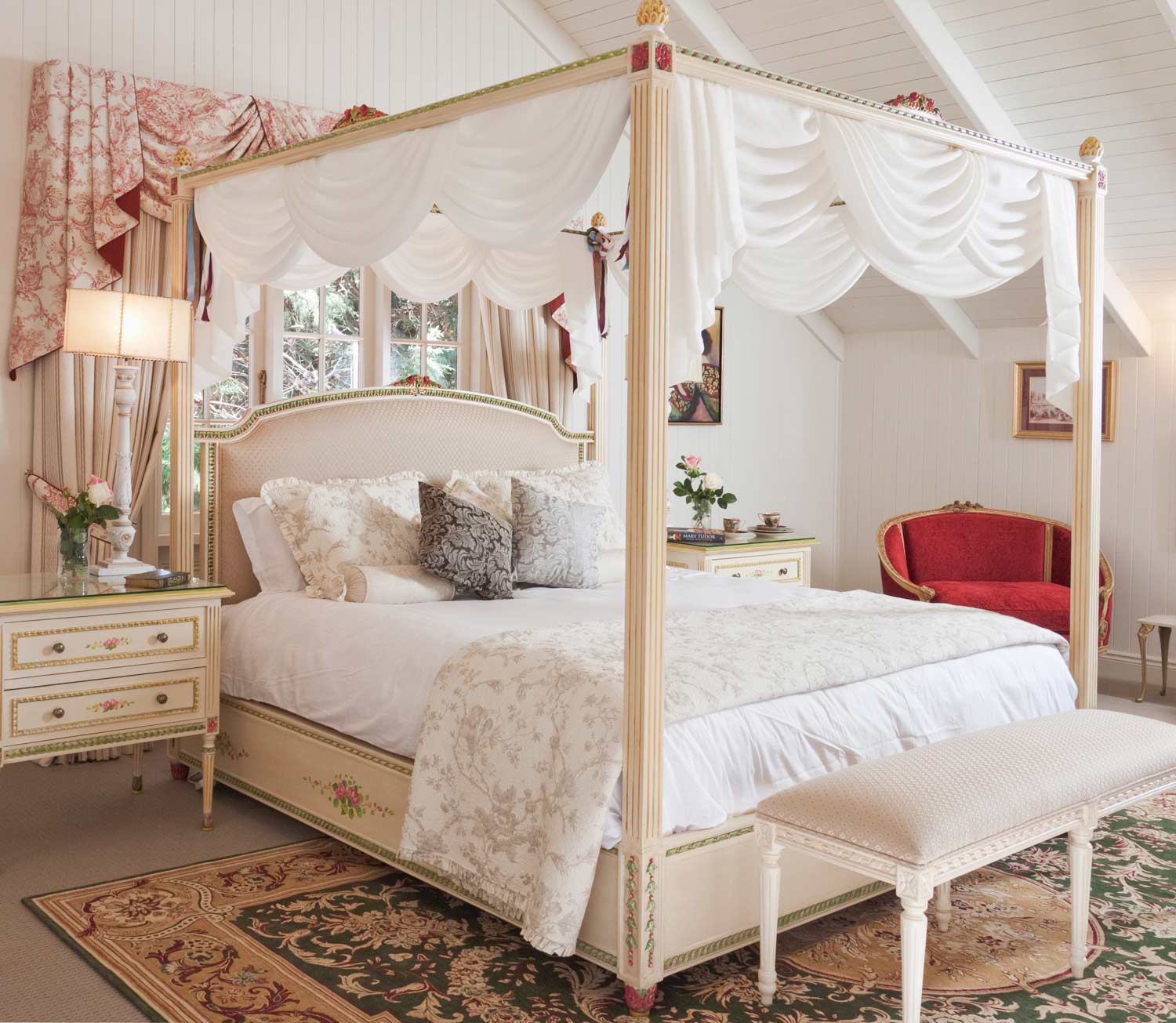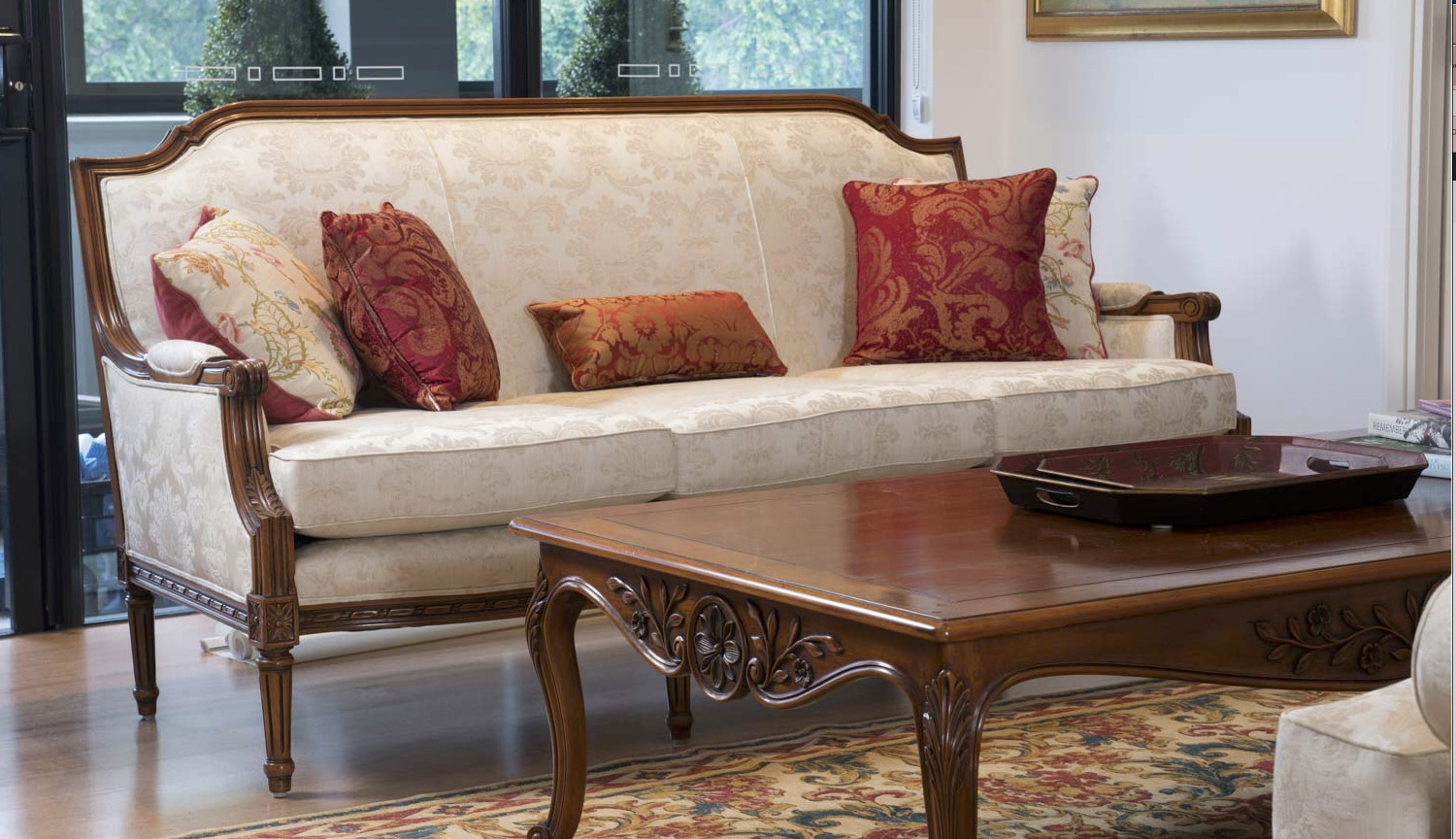
Nothing is more French than ‘Toiles de Jouy’.
Toiles de Jouy is a printed cloth most famously produced by the manufactory of Christophe-Philippe Oberkampf at the French town of Jouy-en-Josas, in north-central France. Often just called ‘toiles’, this fabric usually has a white or off-white background on which a repeated pattern depicting a delicate but fairly complex floral design or pastoral scene with lovers is placed.
A Brief History
Originally toiles came into existence because of the Indian chintzes, which had started appearing in France towards the end of the sixteenth century. At this time, the world’s largest amount of cotton textiles were being produced in India in highly sophisticated production and printing techniques that were are revelation to the West.
Indian Chintzes were made from calico and were richly decorated with colours and patterns made using advanced painting and print-block techniques. They were popular for bed covers, cushions, quilts and draperies and by 1680 more than a million piece of chintz were being imported to France an equal amount to England and Holland.

Chintz were imported by the East India Company and the rapid growth in popularity for chintz became a real worry for the French Mills, who lacked the knowledge and techniques required to make chintz and who preferred native fibres such as calico and hemp. Consequently, in 1686 a ban on all chintz imports was introduced in France, though this had little impact on its reputation. Luckily, the court of Versailles was outside the law and the fashionable young courtiers at the time could still parade around in their chintz clothing.
Indian cotton was a superior textile in many ways. It could be easily washed, was lightweight and used colour-fast dyes that didn’t fade during washing or under in direct sunlight. Eventually, an employer at the East India Company was formal given instruction to take detailed notes on the processes and techniques used by Indian manufactures to make and dye chintz.
Meanwhile French manufacture had tried to make imitation chintz, but this only prompted another ban 1686 on the production of imitation chintz. Still nothing could stop French citizens from following fashion and disregarding the law and slowly but surely French manufacturers discovered the secrets behind the production of chintz, even though the ban on chintz imports and production wasn’t officially lifted until 1759. It was really after this date that the France had its peak in cotton production.
Floral Designs
Between 1760 and 1830 French consumers preferred floral toiles designs. Hence, Oberkampf’s designers produced over 30,000 floral toiles patterns for block print, which had become the more popular method over plate and roller print techniques.

The floral patterns were bright with rich, dense exotic flowers and many of these designs were inspired by the new publications and a fascination with botany in the eighteenth century. As the taste for Indian style floral designs gradually faded, French designers began producing more Western style toiles designs inspired by plants, flowers and scenes of the French countryside.
Bucolic Scenes
Toiles with bucolic scenes are perhaps the most familiar to us today. They capture country life and are also highly reminiscent of the rococo period. In fact, many of the toiles designers took inspiration from painters such as Antoine Watteau, Francois Boucher and Jean-Honore Fragonard.
At this time, rural commerce and the labourers who worked the provinces were fundamental to France’s wealth and prosperity and towards the latter part of the eighteenth century the trend to enact and sentimentalise the follies of rural life emerged among the French aristocracy. When Marie-Antoinette created gardens in the ‘English’ rather than formal court style, this movement was well under way.

Toiles is not only beautiful but it has a rich and exciting cultural history. Since it’s beginnings it has inspired and being loved by many people including the artist Henri Matisse and Madame de Pompadour who is known to have had many pieces of furniture upholstered in toiles. Toiles is such a delicate, yet versatile fabric. It’s scenes, often of lovers by a creek bed, captures the true jovial and romantic quality of both French design and lifestyle. No wonder toiles became so popular back in the seventeenth century and that the love for it continues today.




